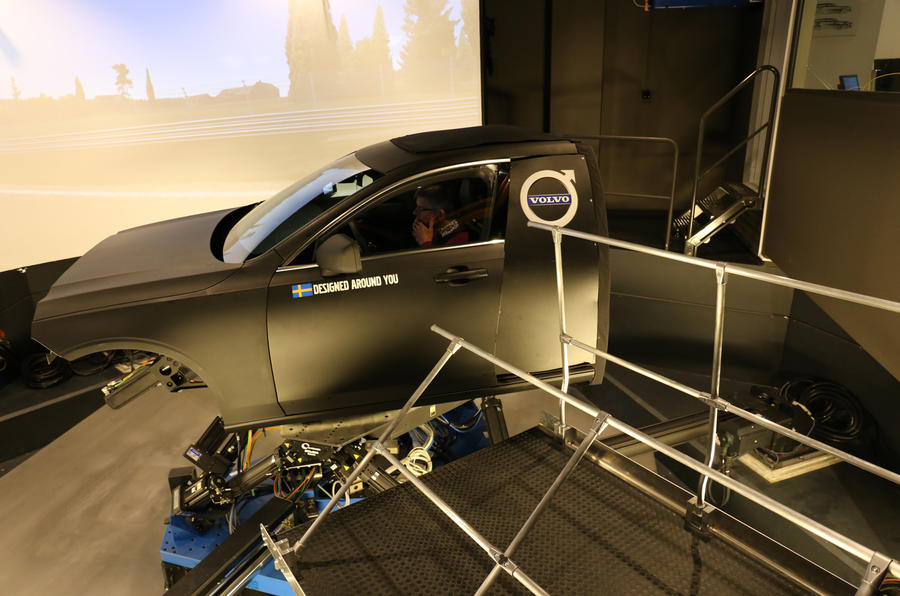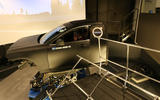The console is in a windowless basement. The screen shows a highly detailed, three-dimensional impression of the tree-lined snake that is the Nürburgring Nordschliefe. The controls include a steering wheel and pedals, but nothing else. Playstation then, in a mate’s basement? No. This is Volvo’s chassis simulator, buried down several flights of concrete stairs at its Gothenburg R&D centre.
I’m here to drive the new Volvo XC60, in T5 front-wheel drive form, around the ‘Ring. Or a part of an XC60, because although I open a door into the crossover’s brand new cockpit, I am only getting into a third of a car, the vehicle in question shorn of its structure aft of the front seats and pretty much everything beneath the bonnet and front wings. It sits on a moving rig, has functional instruments and makes internal combustion noises once started up. Which is done by a man at a control panel behind a glass sheet overlooking the XC60, the rig and a screen worthy of a small arthouse cinema.
The point of all this? Not to entertain bored Volvo engineers, obviously, but to provide a representation of a car before it’s possible to build a physical prototype. The idea is to save time by trying out a new suspension system virtually, months before you can get a prototype out on the track.
The simulator replicates transient cornering in terms of steering and handling, but although the car moves around it does not mimic the g-force generated in a corner, nor when braking and accelerating either. This slightly incomplete set of physical sensations is why there’s a sick bag – never yet used – in the door bin.














Join the debate
Add your comment
Next week an in-depth road